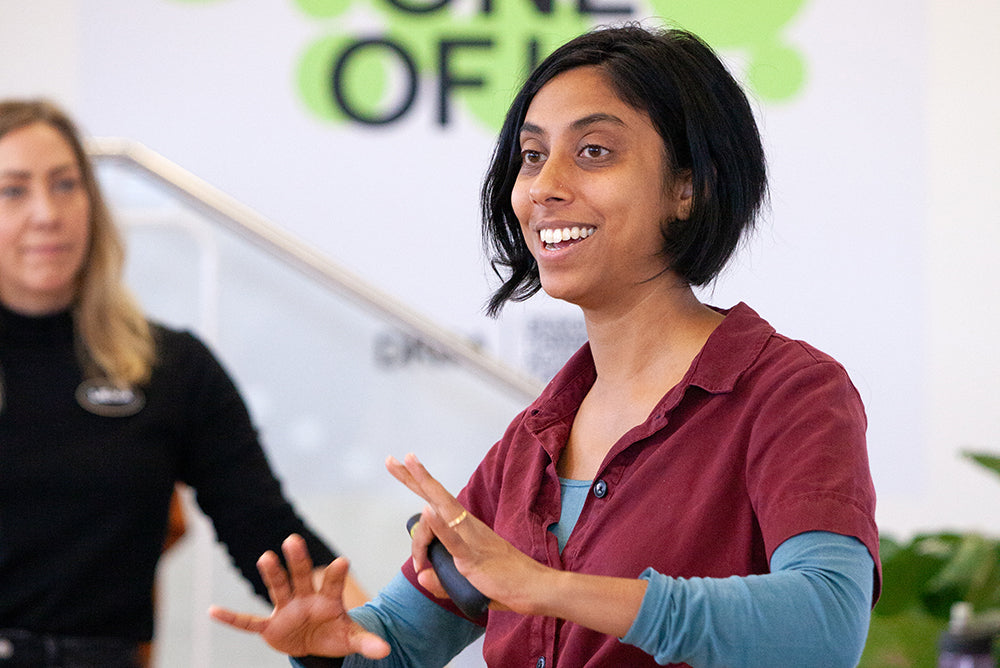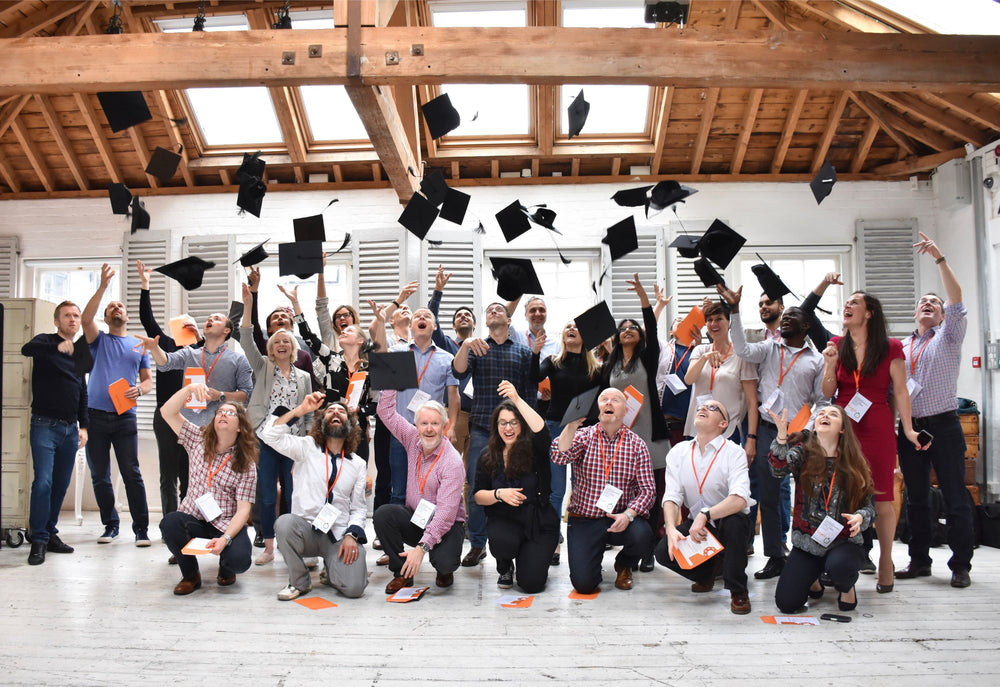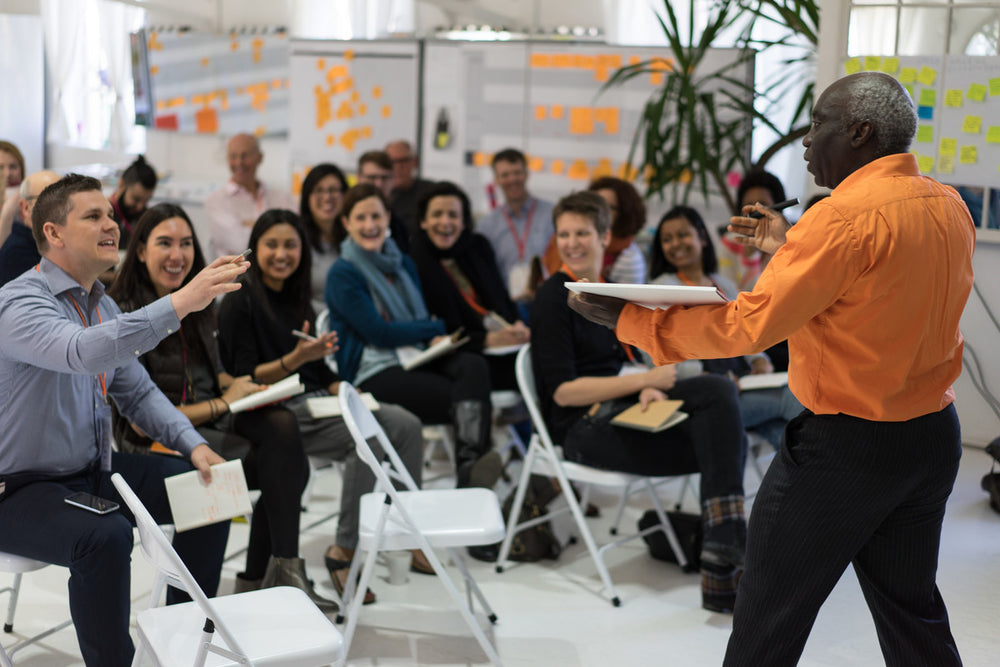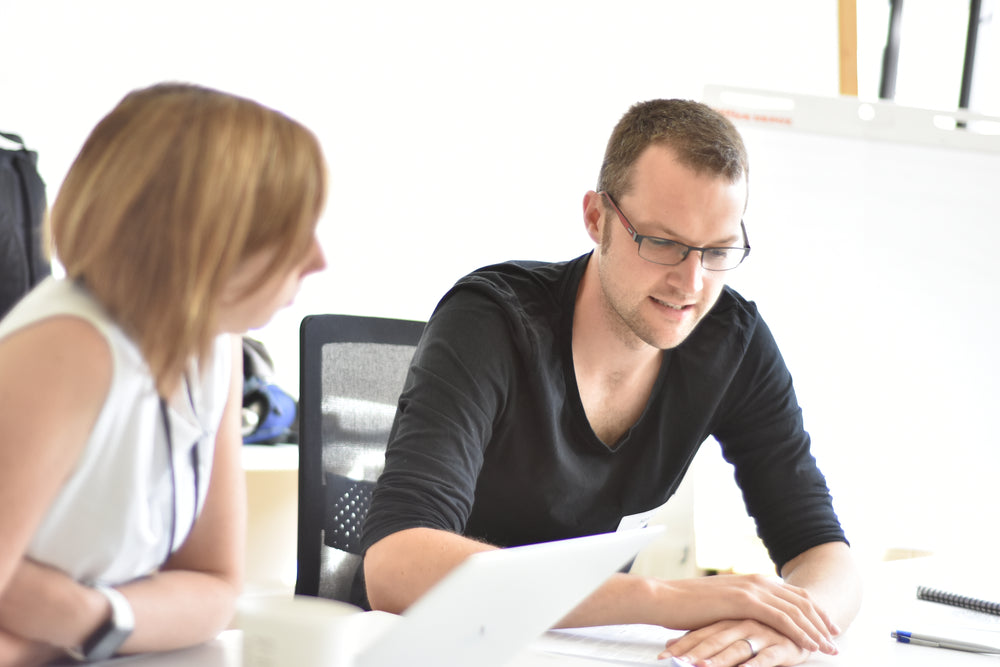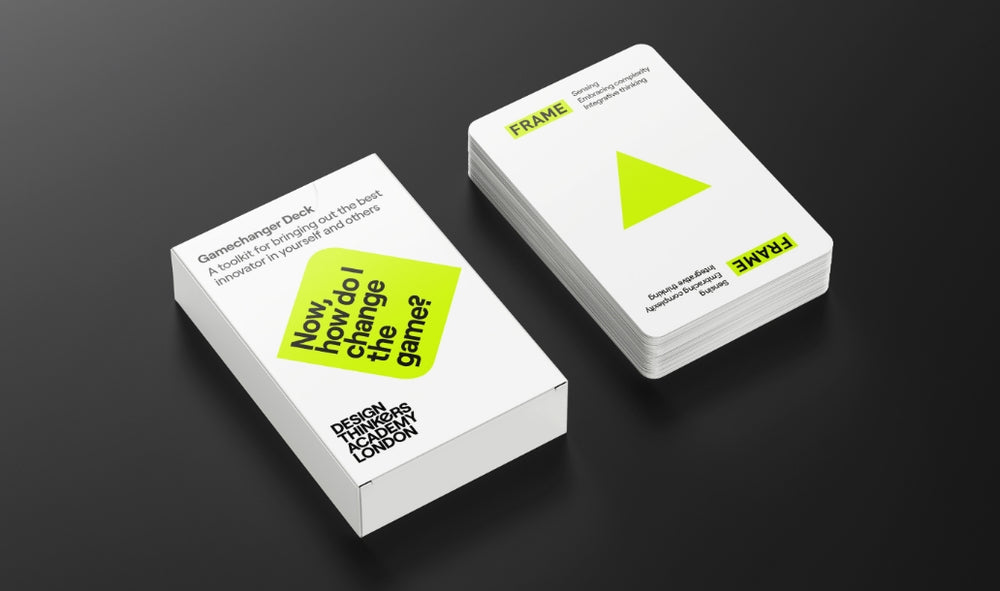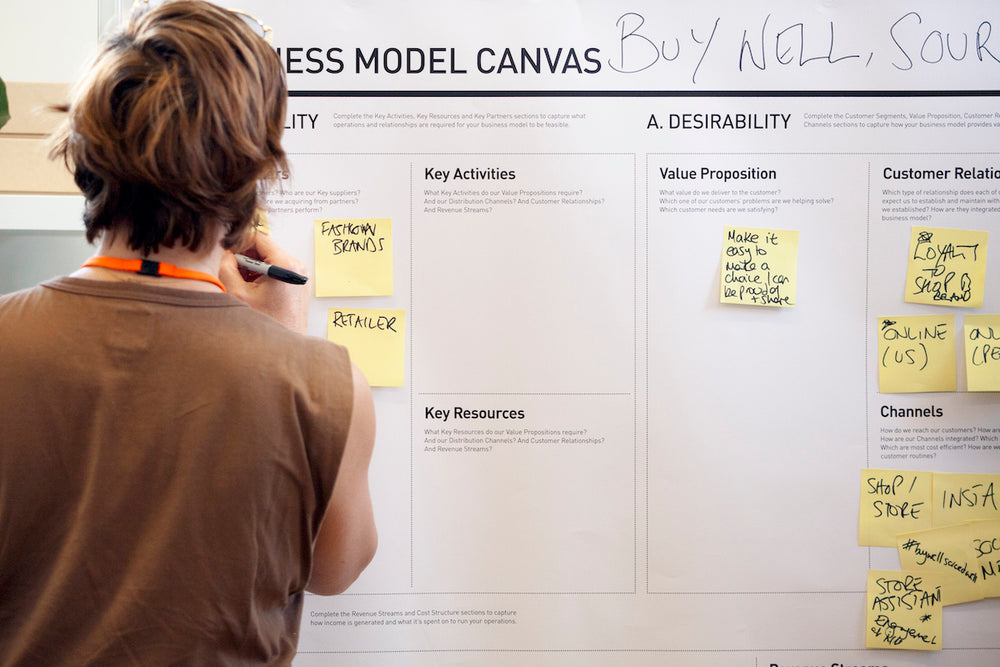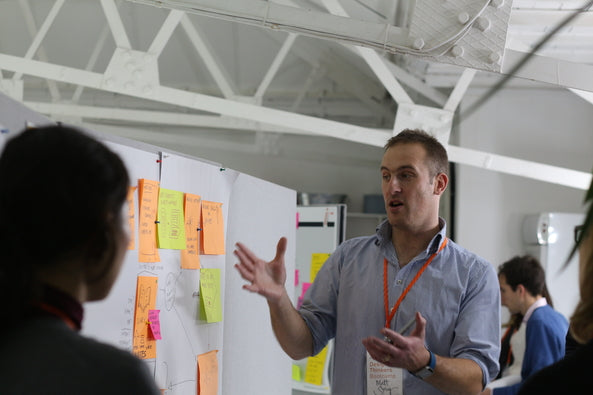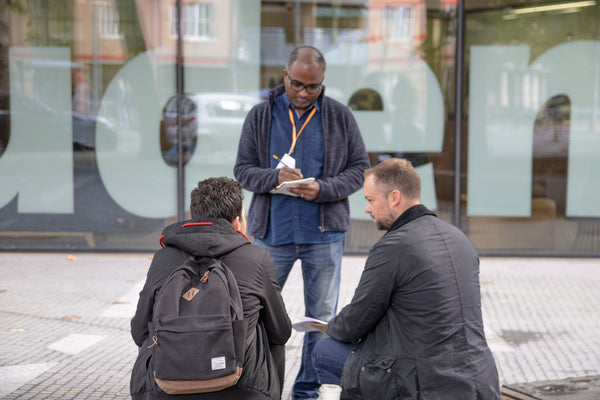What are the challenges for organisations when they try to bring in design thinking? Consultant and Design Thinkers Bootcamp attendee Matt Spry shares his experience of some of the barriers to overcome and why you should still go for it.
In the highly complex and ever-changing business environment we face, organisations need new approaches to remain successful. Increasingly, success depends upon the ability to build deeper, more collaborative relationships with customers who expect more from the brands they support than to be treated as passive consumers. These higher expectations give organisations who embrace a customer-centric approach a significant advantage. Approaches such as lean start-up, agile project management and design thinking have gained prominence partly because of this ongoing shift.
A clear narrative is emerging that helps explain why these approaches have become prominent and what they mean for what successful organisations will look like.
The narrative
A dynamic environment means that agility, adaptability and creativity are increasingly important attributes for every organisation, regardless of sector or size.
Increased complexity means that traditional top-down control simply does not work as well it once did. Centralised decision making is being replaced by engaged and empowered teams.
Staff throughout organisations – but especially those who have direct contact with customers – should be empowered to make changes and conduct experiments within clear boundaries, but without fear of reprisals in the event of failure.
Learning organisations gain a clear advantage – the ability to sense and respond to customer needs builds deeper and better relationships with its customers, and allows organisations to evolve to meet their changing needs through a collaborative approach.
Allowing experimentation and learning takes courage from leaders. As power becomes decentralised, traditional leadership roles become more like coaches, facilitating change, empowering staff and reinforcing the vision and values of the organisation without ego.
These new features are having a huge impact on the structures, practices and governance of the organisations that embrace them. Companies such as Buurtzorg, Netflix and Patagonia are all examples of radically different – but very successful – organisational models that have embraced this narrative, and contradict perceived wisdom.
The role of design thinking
Design thinking can be the catalyst for this journey, by providing the tools to allow a customer-centric view to be prevalent in the design and delivery of products and services.
It empowers people throughout an organisation to sense and respond to their customers’ needs. It encourages collaboration, a bias for action and constant learning, whilst providing a common language for organisations to talk about innovation, change and problem solving.
Beyond providing a highly effective toolkit, by encouraging new behaviours and the resulting impact on culture, design thinking can provoke changes not only in systems and processes but how organisations are structured and governed.
Adopting design thinking will not be easy for many organisations. Its strengths provide a direct challenge to the paradigm that exists in most organisations (the ‘orange’ organisation in Frederic Laloux’s Reinventing Organisations) which thrives on command and control, centralised decision making, traditional business planning and budgeting, hierarchical structures, standard processes and clear roles and lines of reporting.
Overcoming the challenges that design thinking presents, however, is key as organisations look to evolve and remain relevant in this new era.

The challenges
From process to journey
A relentless focus on efficiency in many organisations leads to a focus on internal process improvements as a proxy for change and innovation. It seems far safer and easier to look inside an organisation for improvements than to engage with the thorny challenges customers present.
By focusing on the customer journey and experience rather than the internal process, Design Thinking provides a new, shared language for insight and innovation. Internal processes are then put in the right place – that of supporting the customer experience, rather than the focus of change activity.
From politics to people
Whether caused by the absence of a clear vision, badly designed structures or misguided incentives, internal politics act as an enormous drag on growth and business evolution. Design thinking forces organisations to focus on customers. This helps people from across an organisation to align around common challenges, and work collaboratively regardless of their origin, role or department. Design thinking is an inherently empowering tool, capable of being used throughout organisations to unleash the creativity, energy and ideas of all its people.
From evidence to insight
Customer-centric approaches like design thinking look for insights into customer behaviour and needs as the catalyst for new ideas. Prototyping and co-design then provide the evidence required to attract the resources needed to scale.
In many organisations attracting project resources begins with a business case. Often once this has been prepared, reviewed, revised and finally approved, significant time and opportunity for customer engagement has been lost. A design-led approach makes resource allocation far easier, as evidence for customer engagement and demand is gathered early and consistently.
From perfect to prototype
How many projects or ideas falter on the idea that they need to be perfect to launch? How many well-meaning chief executives and managers have killed projects or new ideas because they didn’t seem ‘ready’? A key element in adopting design thinking is accepting that things are never ‘finished’. It is better to launch early, learn, iterate and improve than demand perfection and risk never launching at all.
From control to speed
The current management paradigm of ‘command and control’ treats organisations like machines – the manager sits at the controls, employees are the parts that move as directed. This model promotes control over speed, and depends upon centralised decision-making. Conversely design thinking allows for rapid creation, testing and iteration of ideas in order for organisations to respond quickly to changing customer needs. What is lost in direct control is more than regained in customer and employee engagement, and the creativity and energy unleashed.
From release to co-creation
The modern customer expects a deeper and more fulfilling relationship with the brands they support. Just as progressive companies have moved from providing products and services to an experience, customers also expect to play a role in designing ad personalising their own journey. Allowing your users the opportunity to contribute to the design of their experience can be daunting, but is key to building trust, loyalty and a more fulfilling relationship.
From strategy to vision and fuzzy goals
The typical annual cycle of forecasting and business planning does not reflect reality. The real world doesn’t fit neatly into everyone’s planning cycles, and so within a few months of a plan being agreed things have changed. Customer needs may evolve, projects may become irrelevant, new challenges may emerge.
The response is to use the purpose or vision to set an organisation’s broad direction and ‘fuzzy goals’, and adopting an agile approach to strategy. Empowering people across an organisation to sense customer needs, and the tools to respond, allows strategy to be owned by everyone.
From hierarchical to organic
Despite the realities of how people get things done, most organisations still use detailed job specifications and org charts to reflect how they are structured. The reality is far messier than these tools suggest. Organisational agility depends in part upon allowing people and resources to move smoothly between projects – so that the strongest survive and scale – and supporting this flexibility with the tools and processes to make it easy. Design thinking provides the common toolkit and language to facilitate a more agile, flexible organisation model.
